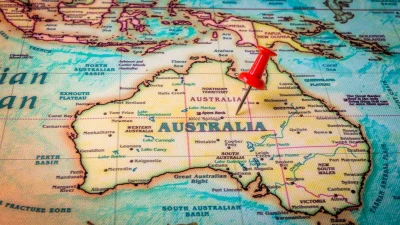A word from the gurus
If you need even more proof that economics is far from an exact science then there is little need to look beyond the last 12 months.
No economic model, no matter how sophisticated, could have predicted economic circumstances following the events of September 11 and the subsequent shock waves still reverberating throughout the global economic system.
But it would be a grave error to assume that as we begin a new year, the current economic problems facing the world’s economies begin and end with the events of September 11.
When economists reflect on the current cycle of market uncertainty resulting in an end to the record 10-year expansionist period in the US economy, it is the downturn in the technology sector, as inevitable as it was dramatic, which is in fact the most common reference point.
The bursting of the tech bubble not only saw the Nasdaq plunge from an extraordinary height, but also other more broad indices in the US, such as the S&P 500, fall by up to 25 per cent from their peak.
It is this drop in economic activity that many believe pushed the US economy officially into recession as early as March 2001, and which is now currently threatening to drag the entire developed world into its first synchronised global recession in over 25 years.
The first sign of the ripple effect from the technology bust came as early as January 3 last year, when the US Federal Reserve surprised everyone by making the first cut in the current phase of interest rate reductions just two weeks after initially announcing it would keep rates constant.
The move prompted a flurry of interest rate cuts around the world, including in Australia, where an initial round of three reductions early in the year was followed by a second round commencing early in September and continuing all the way to the latest cut in December 2001.
If the rate cuts around the world are taken as a sign of trepidation about the state of the global economy, this clearly implies a widespread consciousness about the weakening of the world economy for well over a year now.
It is the policy response that has been made to this weakness over the last year - particularly in the US where massive monetary and fiscal stimulus has been thrown at the problem — that economists are expecting to dominate economic activity over the next 12 months.
For those like BT Funds Management’s chief economist Chris Caton and his counterpart at Ausbil Dexia, John Honan, the stimulus is likely to produce a moderate recovery in economic activity, possibly by the middle of next year.
“We will see a recovery and we will see it in calendar year 2002, the real question is how soon,” Caton says.
But this comparatively optimistic view is not shared by all.
Rothschild Asset Management chief economist Ron Woods is already warning of an over-stimulation of economic activity and of the possibility of dangerously steep returns to growth in 2002.
“You won’t find a bear in the market by mid-2002 and it could come even earlier than that. By March this year people will be talking about the unsustainability of growth throughout the world,” Woods says.
The fear that economic activity may be about to run unchecked, even as a degree of residual bearishness appears to have settled in the minds of many market players in the wake of September 11, has been further exacerbated by what appears to be slightly conservative estimates over how fast the Australian economy is growing.
When Reserve Bank governor Ian Macfarlane announced the latest interest rate cut in Australia on December 5 last year, he estimated the economy had grown at an annualised rate of about three per cent throughout 2001.
But later that same day, when the Australian Bureau of Statistics released the official figures, the economy was shown to have grown by four per cent, a full one per cent faster than the growth rate that had been used to justify the interest rate cut.
Of course, there is no guarantee that the Australian economy will continue to expand at that rate this year, particularly as much of the growth can be attributed to the housing boom prompted by the Government’s first home buyer’s grant, a boost that will end by the middle of the year.
But whether an upturn in economic activity in 2002 implies a spectacularly unsustainable growth cycle or a more moderate recovery, it appears the consensus among economists is that the upturn itself will again see interest rates heading upwards.
That in turn could have implications for the Australian dollar, an issue that seems to have fallen off the radar screen over the last few months.
Most analysts feel the Australian dollar remains vastly undervalued, although few are willing to predict it will rise.
However, if it does rise, there could be significant repercussions for Australia’s export sectors, not to mention Australian investors with a high level of unhedged exposure to international equities.
Perhaps the comforting thing about risk factors like the Australian dollar is that, at the very least, they can to some extent be hedged out.
If the last year has proved anything it is that many factors cannot.
Recommended for you
While the number of advisers switching tends to tick up at the end of the year, Padua Wealth Data reveals which business model sees the most adviser loyalty.
Private credit, auditor misconduct and super trustees have been listed among ASIC’s priorities as the regulator unveils its top focus points for the coming year.
Melbourne-based investment manager Woodbridge Capital has appointed an origination director for south-east Queensland, strengthening its foothold in the region as part of its national expansion strategy.
Barings has appointed a new head of Asia Pacific to succeed Duncan Robertson, who will retire after almost two decades with the firm.











